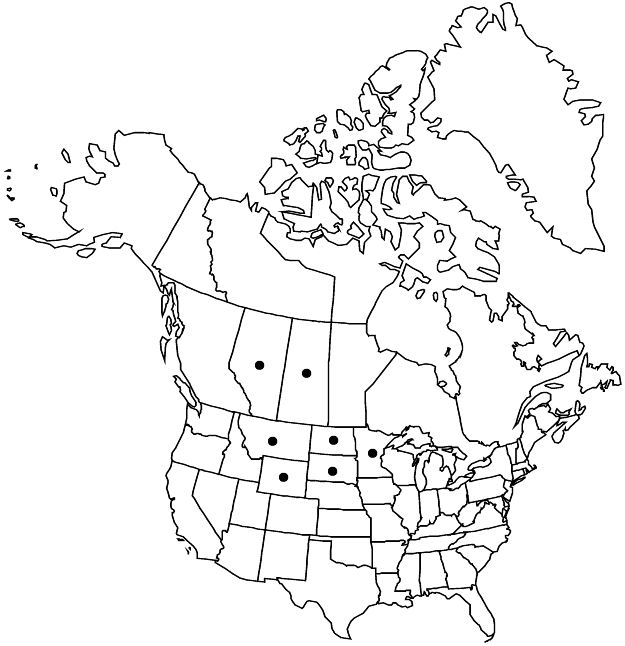Crataegus sheridana
Bot. Gaz. 34: 370. 1902.
Shrubs, 20–35 dm. Stems: twigs: new growth color not recorded, pubescent, 1-year old light brown to olive-tan or mid brown, 2-years old dark gray or reddish brown overlaid dark gray, older gray; thorns on twigs usually numerous, usually recurved, 2-years old very dark, shiny red-brown, slender to moderately thick, (2.5–)3–5(–7) cm. Leaves: petiole length 40–50% blade, pubescent (especially in adaxial sulcus), ± densely sessile-glandular; blade sometimes broadly ovate or suborbiculate, sometimes ± ovate, elliptic-ovate to ovate, 3.5–5(–6) cm, nearly full grown at flowering, ± thin, base cuneate, broadly cuneate, or subtruncate to subcordate, lobes (3 or)4(or 5) per side, sinuses shallow, LII 5–15%, lobe apex acute (except where blades elliptic-ovate to ovate, then lobes deeper, LII 15–30%, lobe apex subacute), margins with subacute teeth, veins 3 or 4 per side, apex acute to obtuse, abaxial surface glabrous, veins glabrous or pubescent young, adaxial densely appressed-scabrous-pubescent young (variably persistent). Inflorescences 5–15-flowered; branches ± densely pubescent; bracteoles pallid, narrow, margins sessile-glandular. Flowers 14–16 mm diam.; hypanthium proximally ± tomentose, medially densely short-pubescent; sepals greenish, triangular, length not recorded, margins glandular-serrate, abaxially glabrous, adaxially pubescent; stamens 10, anthers ivory; styles 4 or 5. Pomes 1–6 in infructescences, bright red, broadly ellipsoid to suborbicular, 9–11 mm tall, pubescent, rarely glabrate; sepals ± spreading to reflexed; pyrenes 3 or 4, sides ± roughened with shallow, irregular pitting or diagonal scarring.
Phenology: Flowering May–Jun; fruiting Sep.
Habitat: Thickets, brush
Elevation: 300–1200 m
Distribution

Alta., Sask., Minn., Mont., N.Dak., S.Dak., Wyo.
Discussion
Crataegus sheridana occurs only east of the Rocky Mountains and is abundant in the Cypress Hills of Alberta and Saskatchewan. Collections from the montane islands of Montana are also known. Until confusion with the superficially similar C. chrysocarpa of the Great Plains and Prairies is cleared up in all the relevant herbaria, we will have an incomplete knowledge of the distribution of C. sheridana; however, it is widespread in the Great Plains region. Its plants are usually taller than sympatric C. chrysocarpa and also C. macracantha.
Crataegus sheridana has superficial resemblances to the C. chrysocarpa group; it is distinguished by its pitted pyrenes and usually larger leaves. In the Cypress Hills, where this species has the shortest thorns of any hawthorn in the red-fruited group, it is further distinguished from most specimens of the C. chrysocarpa group by the densely hairy to tomentose inflorescence branches and hypanthia and by its leaf shape. Collections from the Cypress Hills indicate that form of C. sheridana to be peculiarly round-leaved with pallid bracteoles; Montana forms have longer thorns, longer, more acutely lobed leaves, more elliptic-ovate to ovate blades, and red-brown rather than pallid bracteoles.
In all likelihood, Crataegus sheridana represents a series of hybrid descendants between C. chrysocarpa and C. macracantha. The reasons for ignoring its existence over a long period were discussed by J. B. Phipps et al. (2007).
Selected References
None.